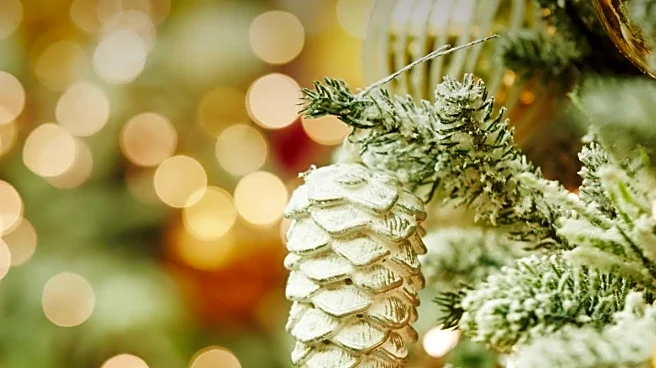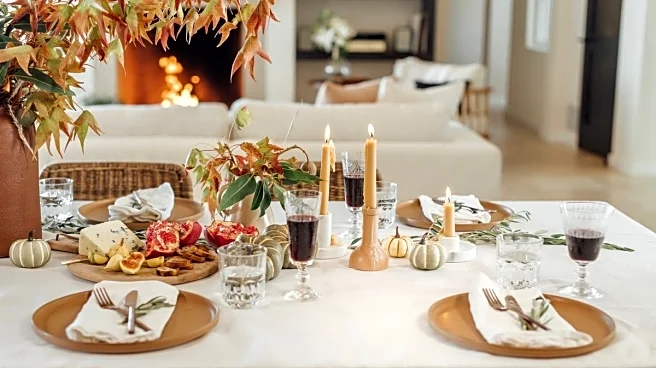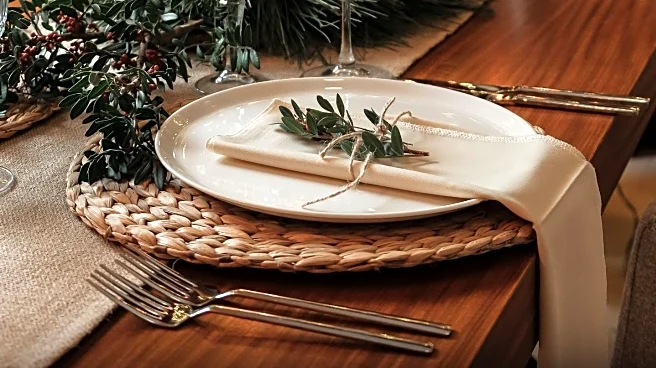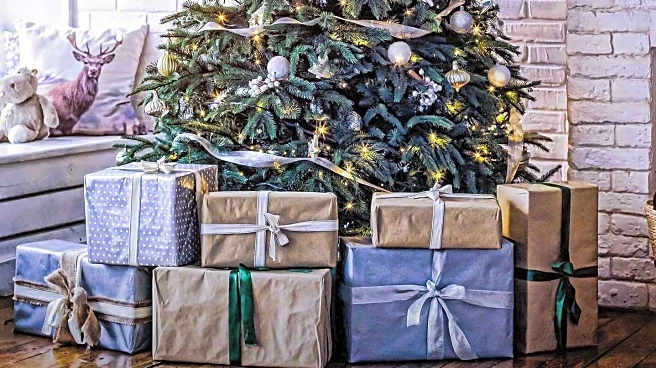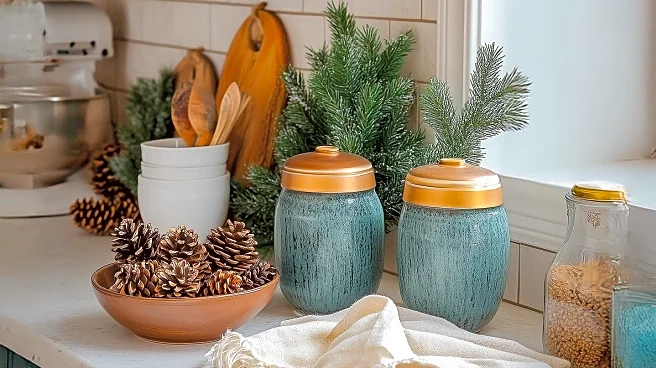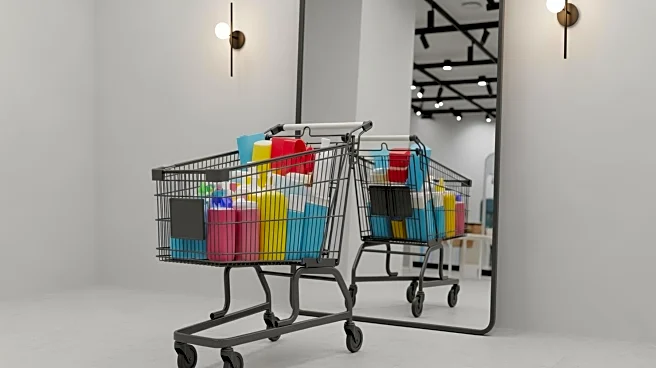What's Happening?
Artificial Christmas trees and wreaths are becoming increasingly popular as they offer a realistic appearance without the hassle associated with real trees. These artificial options are designed to look
lifelike, with features such as pre-lit branches and realistic foliage. The Dunhill Fir, for example, stands at 7.5 feet tall and includes 900 dual-color LED lights, providing a classic Christmas tree vibe without the mess of shedding needles. Other options include the Balsam Hill Fraser fir, which is easy to set up and store, and a compact pine tree suitable for small spaces. Additionally, wreaths like the Plow & Hearth 30-inch festive wreath offer weatherproof designs with dual-function lights, adding festive cheer both indoors and outdoors.
Why It's Important?
The shift towards artificial Christmas trees and wreaths reflects a growing trend in holiday decor that prioritizes convenience and sustainability. These products offer a long-term investment, as they can be reused year after year, reducing waste and the environmental impact associated with real trees. The realistic appearance of these artificial options allows consumers to maintain traditional holiday aesthetics while benefiting from modern innovations such as pre-lit branches and easy assembly. This trend is significant for the holiday decor industry, as it caters to consumers seeking both aesthetic appeal and practicality.
What's Next?
As the holiday season approaches, retailers are likely to see increased demand for artificial Christmas trees and wreaths. Consumers may take advantage of promotions, such as the 15% discount on orders over $75, to purchase these items. The convenience of online shopping and fast delivery options, especially for Amazon Prime members, will further drive sales. Retailers may continue to innovate, offering more customizable options and expanding their product lines to meet diverse consumer preferences.
Beyond the Headlines
The popularity of artificial holiday decor may also influence cultural perceptions of traditional holiday practices. As more households opt for artificial trees, there could be a shift in how holiday traditions are celebrated, with a focus on sustainability and modern convenience. This trend may also impact the real Christmas tree industry, prompting growers to explore new strategies to compete with artificial alternatives.
